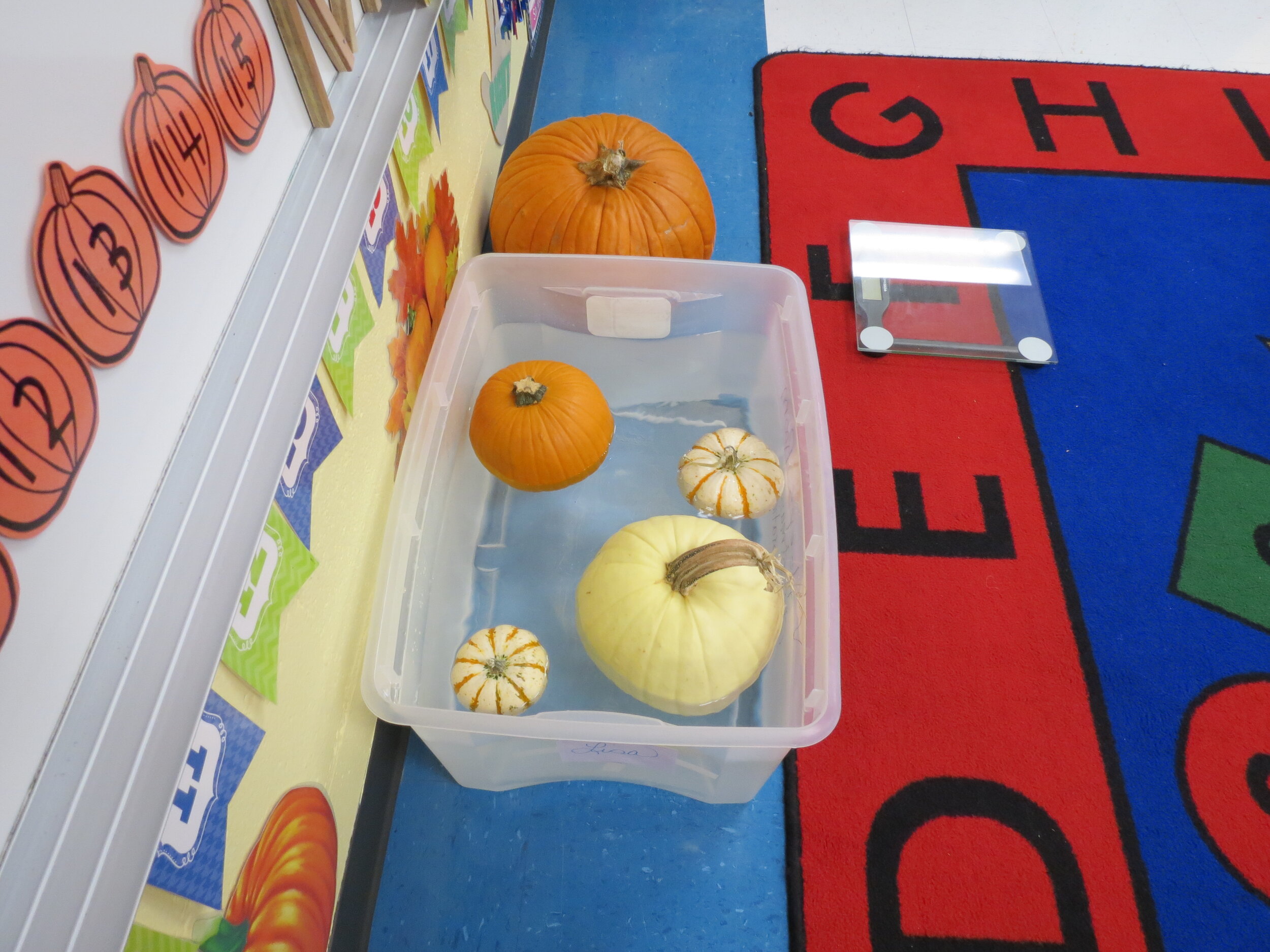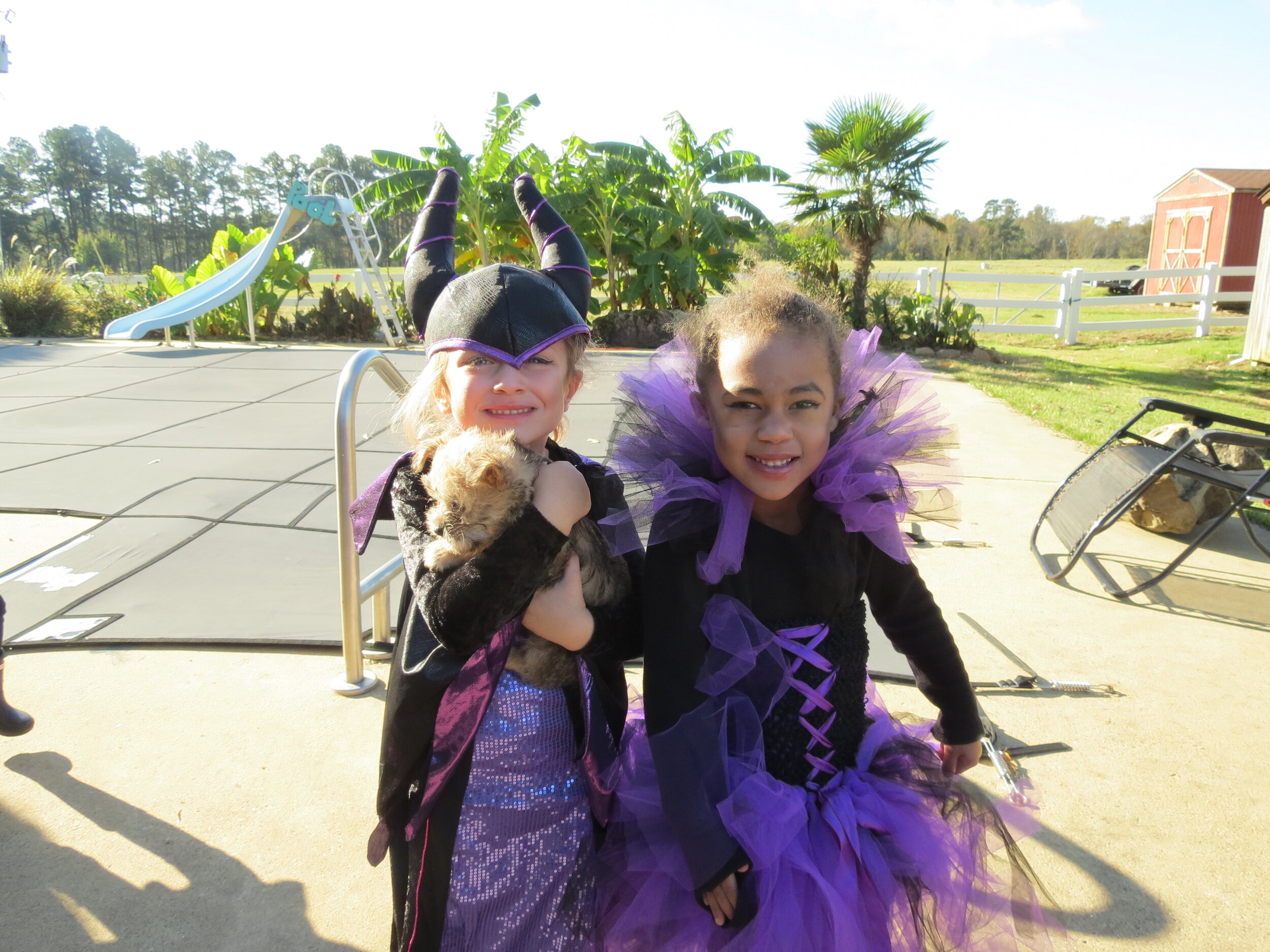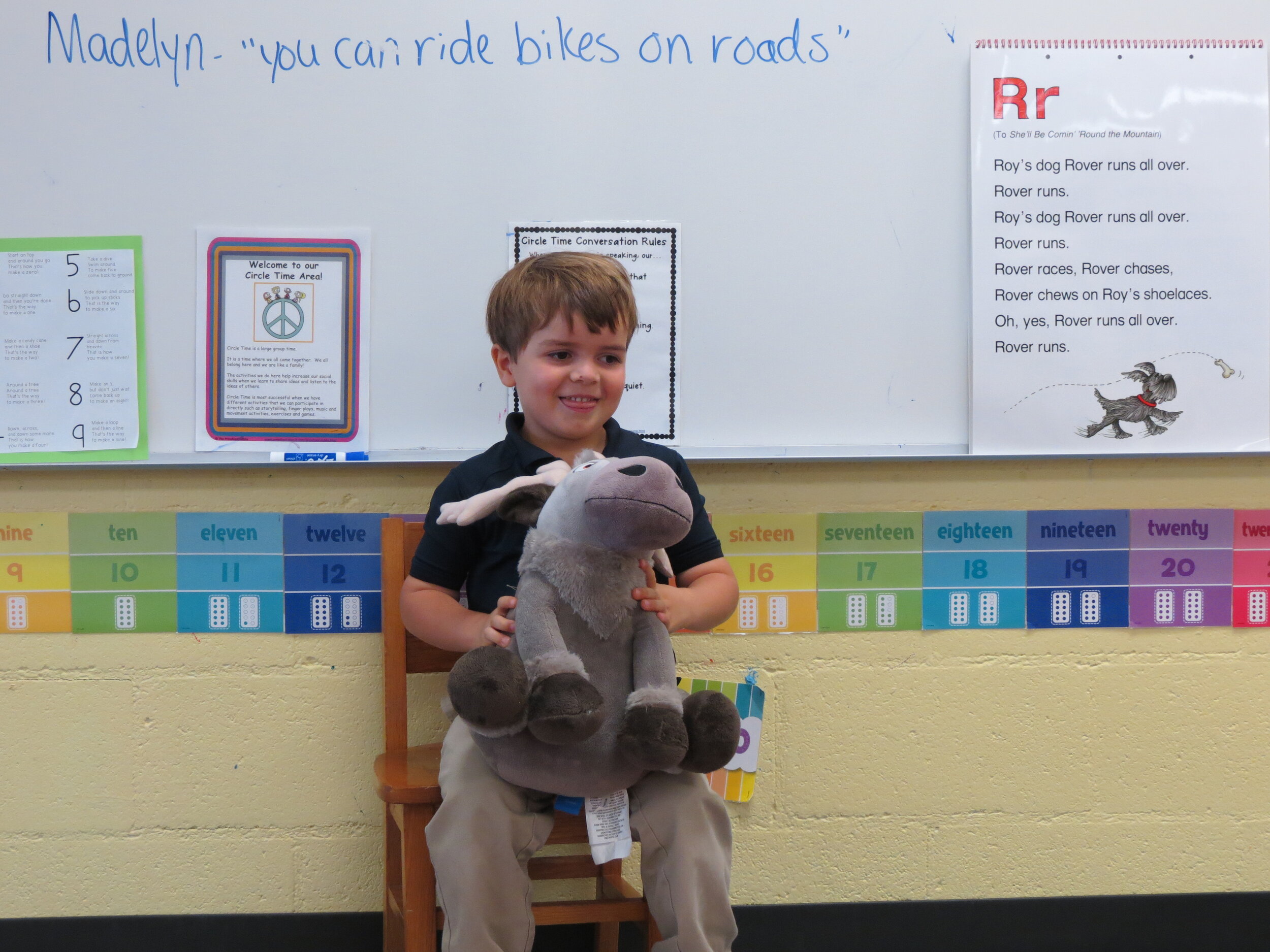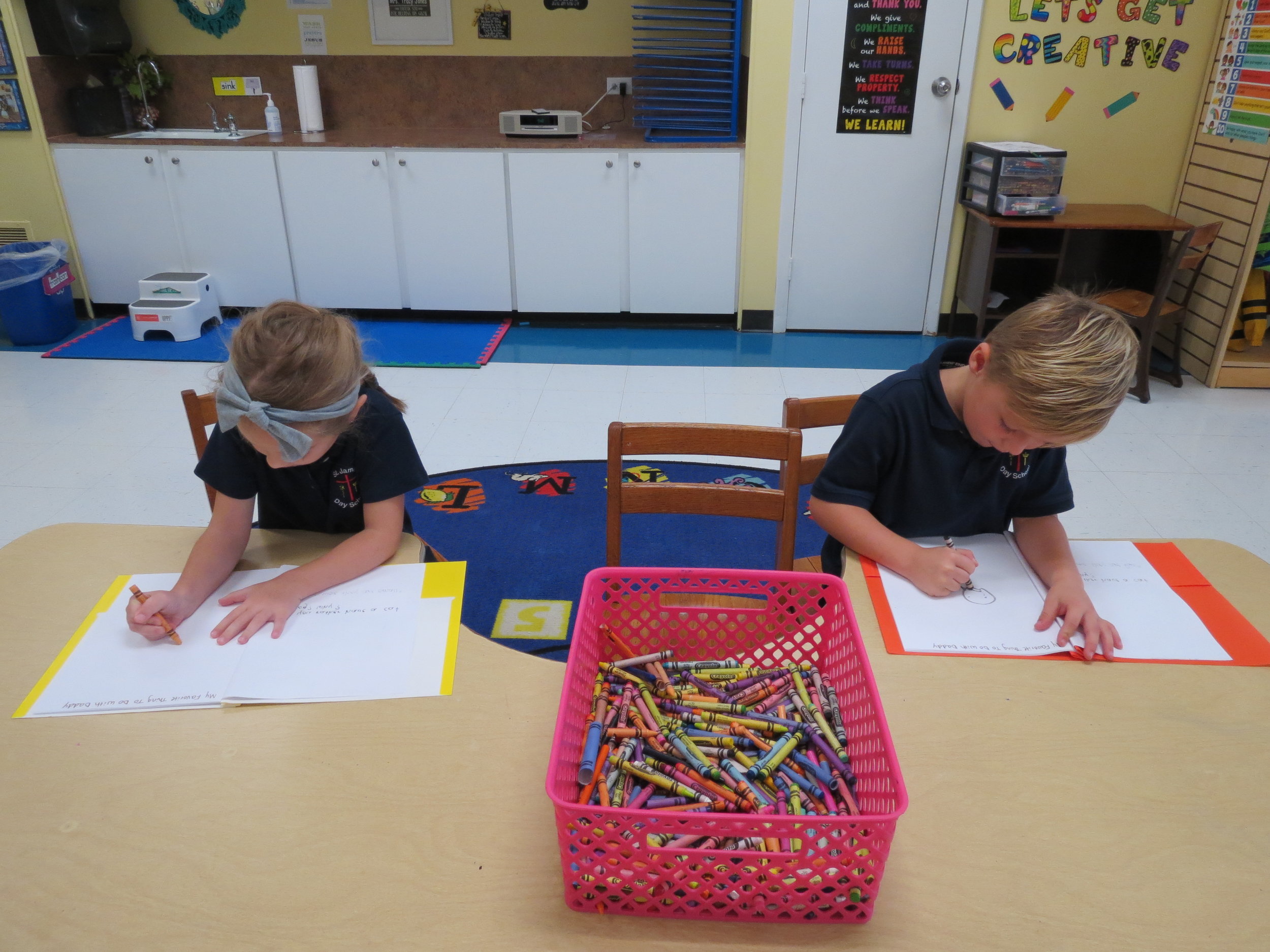Pumpkin Math and Science
Pumpkin math and science was a big hit with the children. Skills such as estimating, tallying, classifying, and measuring circumference (we used yarn to measure our pumpkin, a great introduction to different forms of measurement).
First, the boys and girls used their yarn to measure the circumference around the largest pumpkin. Next, they estimated the number of lines on the pumpkin. Various answers were given, and Madelyn was our winner with an estimation of 30. After that, estimations were recorded in regard to the pumpkin's weight, Arthur came closest with his estimation of 31. Finally, we tallied the number of people who thought the pumpkin would float in water, and those who thought it would not float. To our amazement it floated! Hands on learning is always the best!
Opportunities, Inc.
The Pre-K children at St. James Day School are taught to be caring people and good citizens. On Halloween, the children dressed up in their costumes and visited Opportunities, Inc. for our annual community service project. While at Opportunities, Inc., the classes sang fun Halloween songs to the students. Our children always look forward to singing to the students at Opportunities, Inc. and making their day a little brighter.
Halloween at the Curtis farm
The Curtis family hosted our Halloween party with games, food, and a hayride!!
































































































































































